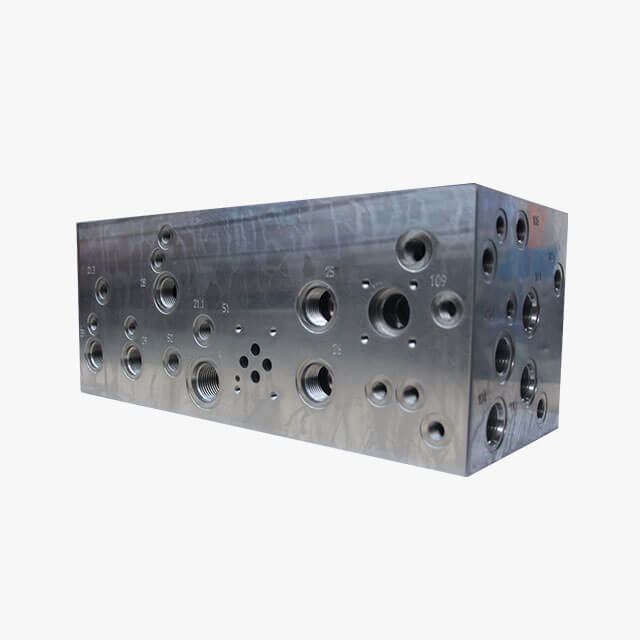Hydraulic valve block (referred to as hydraulic valve) is the control element in the hydraulic system, which is used to control the pressure, flow and flow direction of the fluid in the hydraulic system, so as to meet the requirements of different actions of the executive elements. Because of its compact structure, good sealing performance, convenient maintenance and confidentiality, it is used in hydraulic transmission system.
The valve block should be designed first and then processed. The processing technology is as follows: pretreatment. The material for processing valve block shall be compact and free from interlayer, trachoma and other defects, and the blank shall be treated before processing. Cast iron blocks and larger steel blocks should be aged and pretreated before processing. Cutting. Generally, at least 2mm machining allowance shall be reserved for each side. Milling profile. Milling 6 sides of valve block, leaving 0.2-0.4mm rough grinding amount on each side. Rough grinding. Rough grinding 6 sides of valve block, leaving 0.05 ~ 0.08mm fine grinding amount on each side, parallelism of each pair of corresponding surfaces is less than 0.03mm, and perpendicularity of two adjacent surfaces is less than 0.05mm. Draw a line. If possible, it can be directly completed with intermediate drill on CNC drilling machine. Drilling. The surface roughness of each hole is Ra12.5. Fine grinding. Grind 6 surfaces of the valve block to a roughness of ra0.4um.
During the processing of valve block, the form and position tolerance shall be strictly controlled to meet the requirements. The reference value of form and position tolerance is as follows: the perpendicularity tolerance between six surfaces of valve block is 0.05mm; The parallelism tolerance of the opposite surface is 0.03mm; The flatness tolerance of each surface is 0.02mm; The perpendicularity tolerance between the thread and its mating surface is 0.05mm; The tolerance of perpendicularity between hole and end face is 0.05mm
In order to ensure the cleanliness of the hydraulic system, the hydraulic valve block should be deburred. At present, many manufacturers still use brush for manual deburring, but also use methane blasting method for deburring. After deburring the hydraulic valve block, it needs to pass the inspection of industrial endoscope to get the result of deburring.
Clean the valve block. Remove the particulate pollutants, corrosives, grease, etc. on the surface of valve block. However, in the process of hydraulic valve block machining, burr often occurs, which is harmful to the hydraulic system. Therefore, there are also relevant classification and evaluation rules for burr quality division according to the surface roughness. Therefore, when the burr of hydraulic valve block appears, in order to get the cleanliness of the hydraulic system, it is necessary to use the relevant process to remove it.
